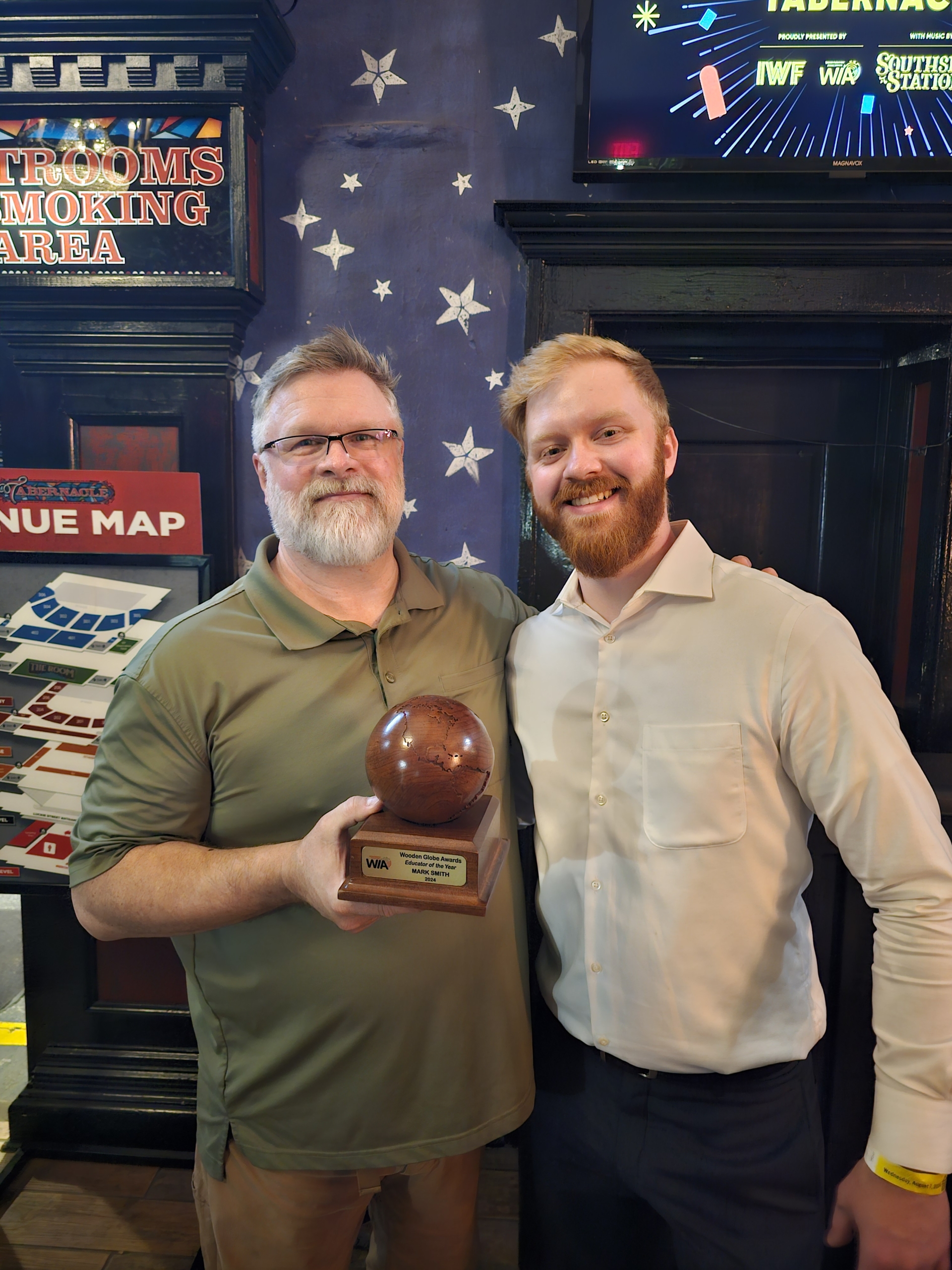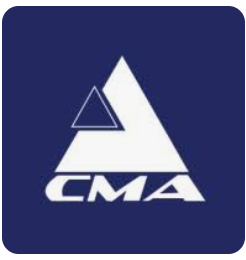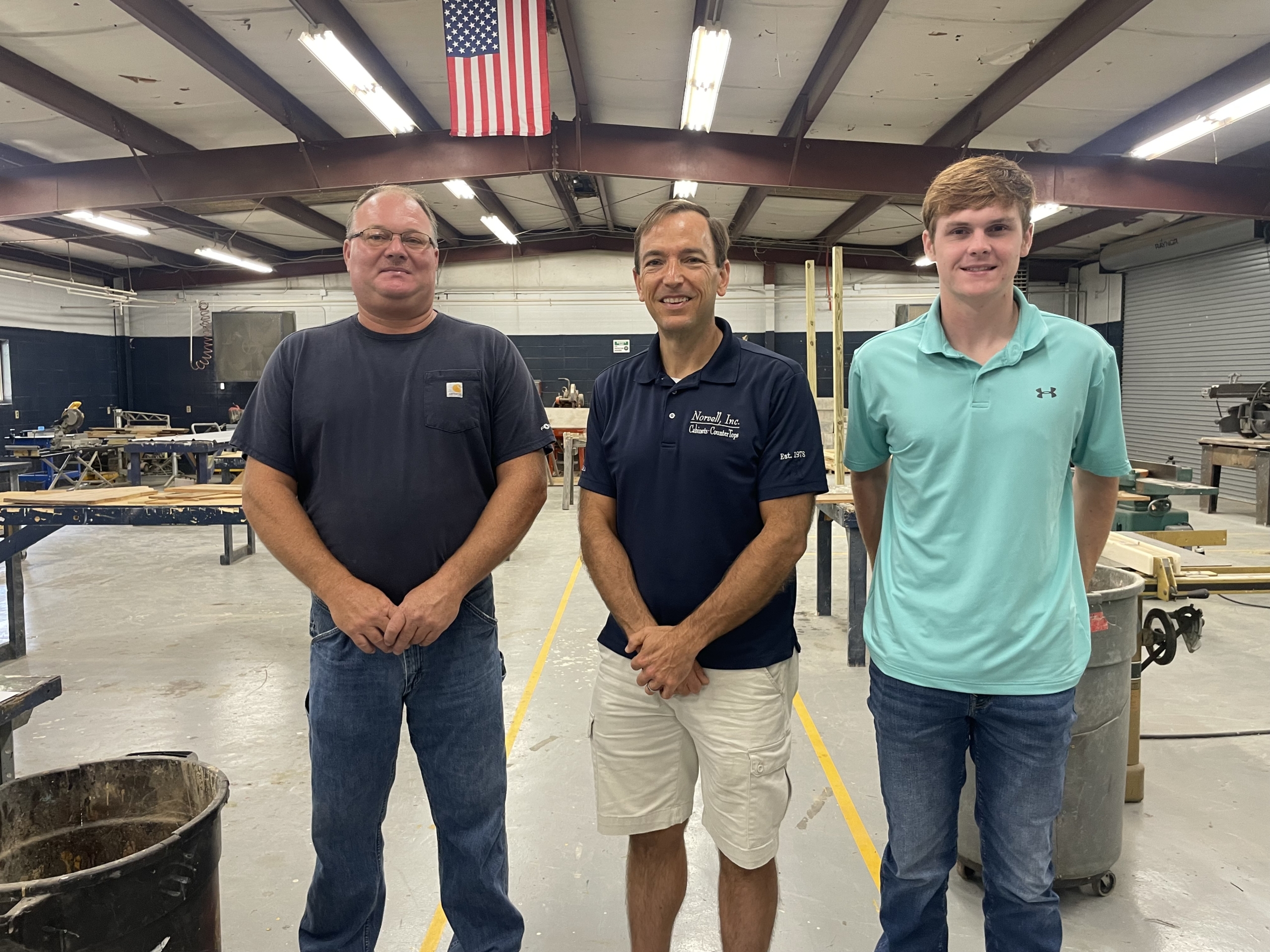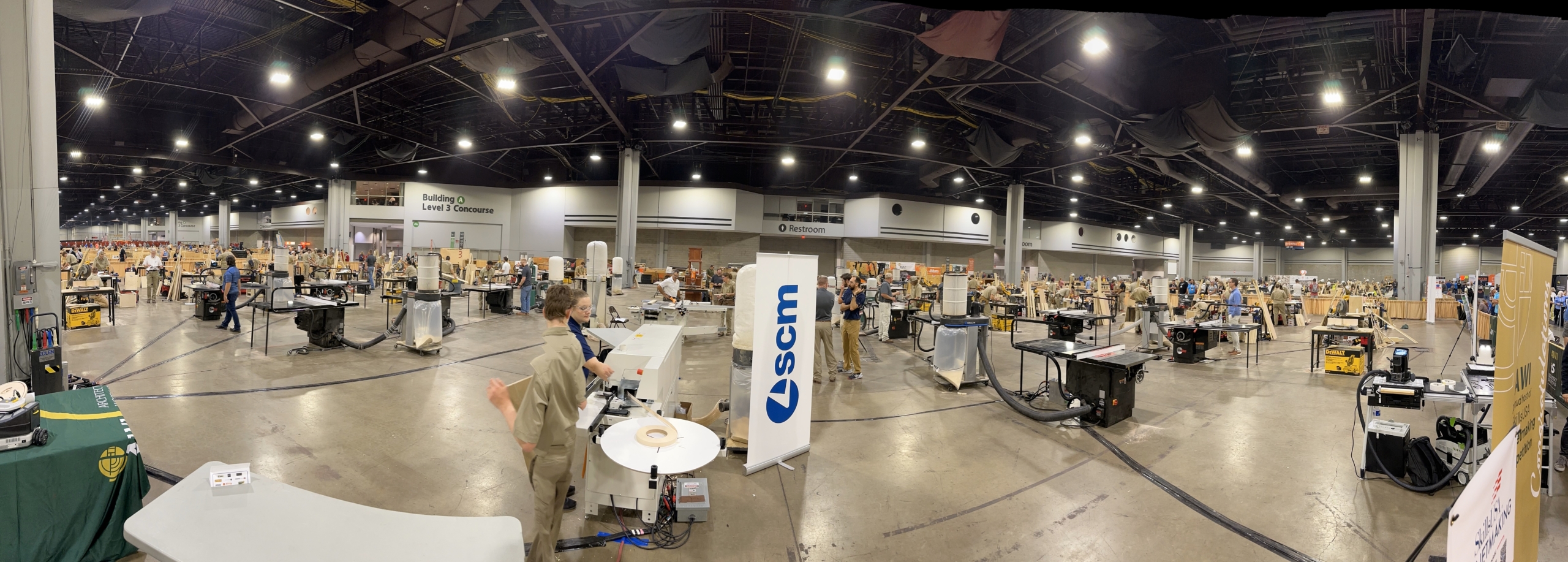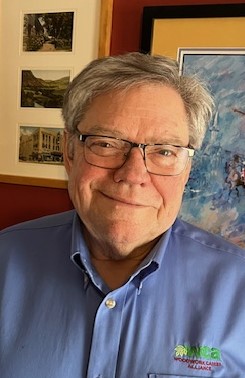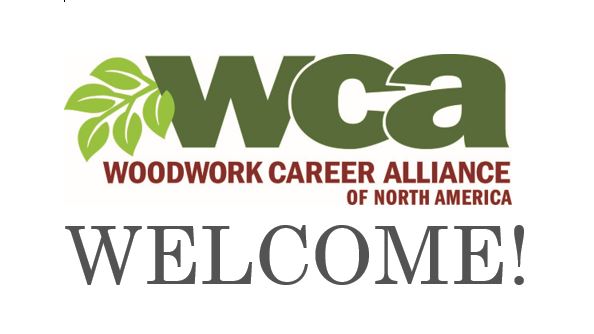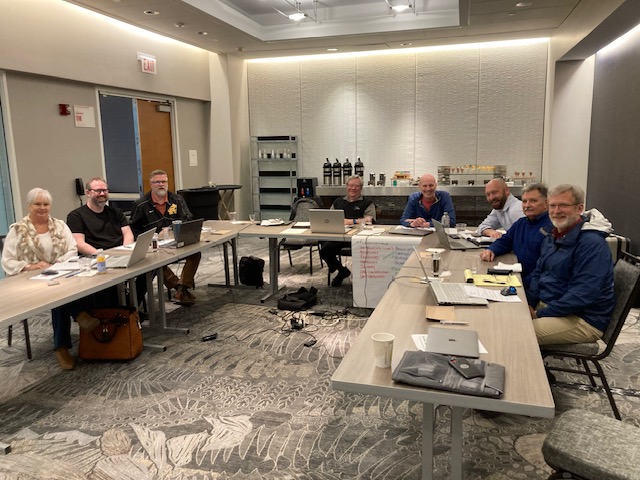Amity High School Woodworking Teacher John Stearns Wins $50,000 Harbor Freight Tools for Schools Prize
The award winner is a long-time active member of the Woodwork Career Alliance, including serving on the WCA Board of Directors.
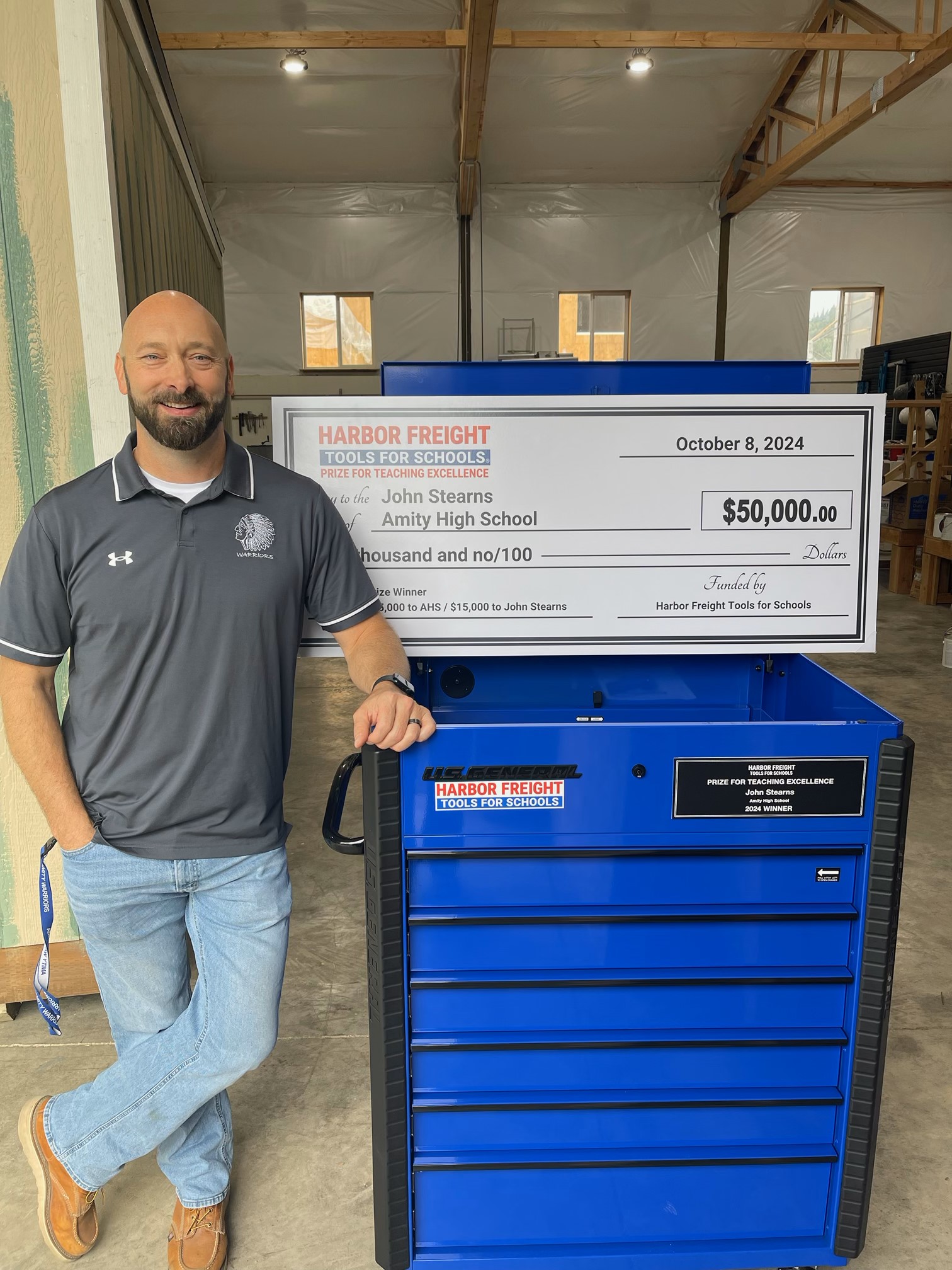
In addition to the cash prize, John Stearns, CTE Director at Amity High School, won a tool cabinet in the eighth annual Harbor Freight Tools for Schools Prize for Teaching Excellence award program.
AMITY, Ore. — John Stearns, Career Technical Education Director and woodworking instructor at Amity High School, has been honored with the 2024 Harbor Freight Tools for Schools (HFTS) Prize for Teaching Excellence. This prestigious award recognizes outstanding educators who are shaping the future of skilled trades.
As a recipient of this award, Stearns will receive a $50,000 prize package, including a $35,000 grant for Amity High School and a $15,000 personal award. This generous funding will be used to enhance the school’s CTE program and provide invaluable resources for students.
“The experience has been overwhelming,” Stearns said. “My phone and email immediately blew up with well-wishes and more importantly, industry professionals wanting to get involved in my program. I’m really looking forward to the expanded opportunities my students will have.”
Stearns began his teaching career in cabinetmaking and furniture construction in Amity then served as the lead woodworking instructor at the MiLL National Training Center in Colorado Springs, Colorado, for two years. He returned to his educator roots in 2020, becoming CTE Director and construction teacher at Amity High in 2020.
Stearns has been an active EDUcation member of the Woodwork Career Alliance of North America for more than a decade and was certified as a WCA accredited skill evaluator in 2014. He is also a member of the WCA’s Board of Directors and Education Committee.
Stearns’ dedication to his students is evident in his innovative teaching methods and his focus on practical, hands-on learning experiences. He emphasizes the importance of problem-solving, communication, and teamwork, skills that are essential for success in any career.
“I can teach transferable skills to students who, no matter what career path they ultimately choose, can use those skills to be successful,” Stearns said. “I can show a young man or young woman how to look someone in the eye and shake their hand on a job site, and that skill is transferable to any life path. I can teach a student how to solve a problem while looking ahead and anticipating the next issue, and that skill is transferable to any life path that student chooses. What a cool blessing that is for a teacher.”
Established in 2017, The HFTS Prize for Teaching Excellence recognizes teacher excellence among high school skilled trades including industrial technology, welding, construction, automotive, carpentry, and more. The prize is intended to increase understanding, support and investment in skilled trades education in U.S. public high schools. Stearns’ application was one of more than 900 received for the 2024 prize.
“On behalf of the Woodwork Career Alliance of North America, I extend my heartfelt congratulations to John for winning this prestigious prize,” said Scott Nelson, president of the WCA. “John’s dedication to inspiring the next generation of woodworkers is truly commendable. His passion, expertise, and commitment to fostering a love of woodworking are an invaluable asset to our industry. We are honored to have him as a part of the WCA community.”
About the Woodwork Career Alliance
The Woodwork Career Alliance of North America was founded in 2007 as a 501(c)(3) non-profit corporation and is governed by a volunteer board of directors. The WCA’s mission is to develop and administer a unified set of Skill Standards for the wood products industry. Since 2011, WCA has developed observable and measurable performance standards and assessments for more than 240 woodworking machine operations. In addition, WCA has issued over 6,000 Passport credentials, a portable, personal permanent record documenting each holder’s record of woodworking skill achievements. More than 140 high schools and post-secondary schools throughout North America are WCA EDUcation™ members and a growing number of woodworking companies have joined the WCA as MANufacturing™ members. To learn more about the WCA and how to get involved with its programs, including sponsorship opportunities, visit WoodworkCareer.org.



